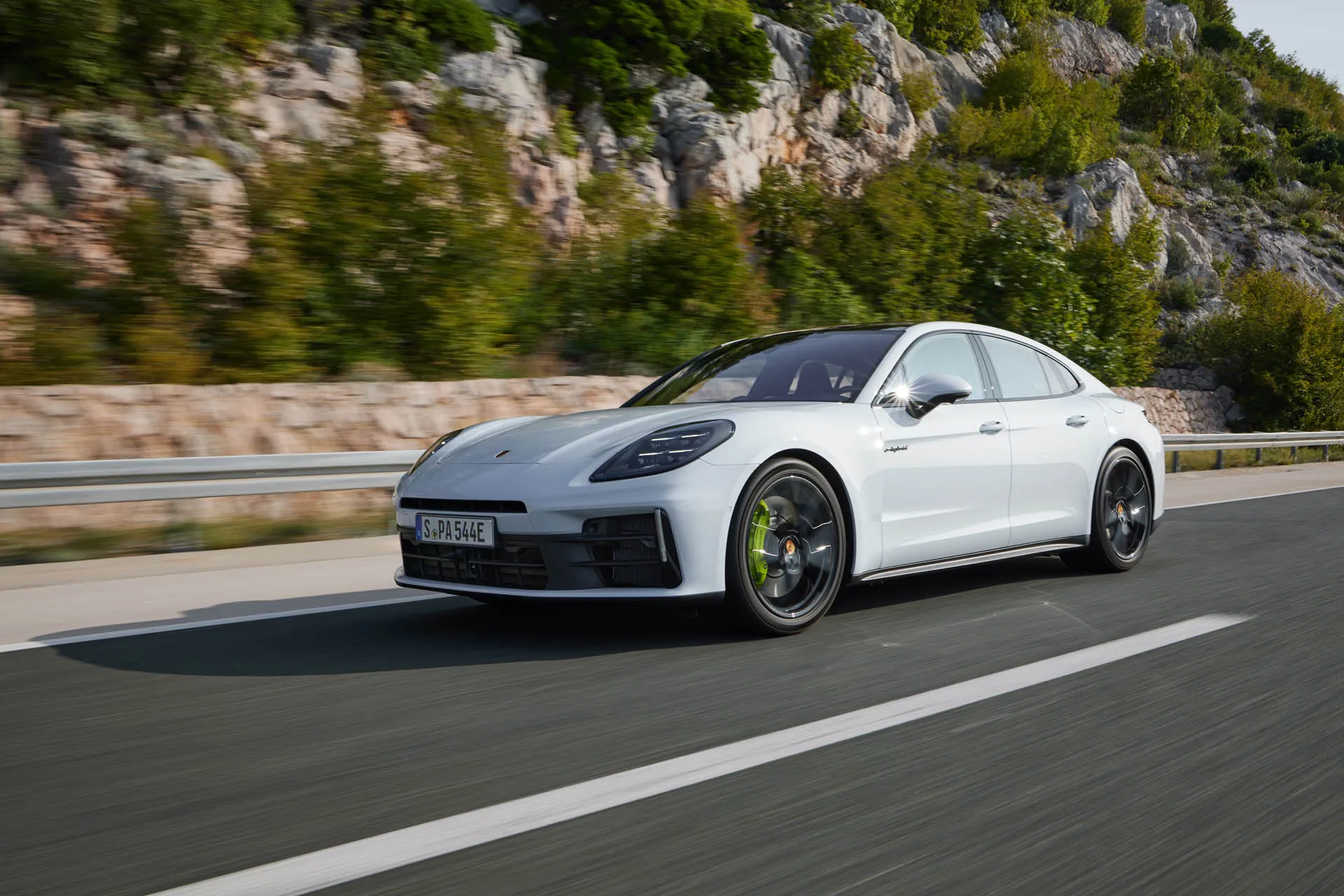Porsche hasn’t forgotten about plug-in hybrids.
Although the sports-car brand just earlier this month revealed a revamped 2025 Taycan EV that offers more range, better efficiency, and stronger acceleration, and it’s soon rolling out its fully electric Macan SUV, it has a whole suite of other plug-ins on the way.
Porsche already revealed in November that its third-generation Panamera lineup would top out with a plug-in hybrid Turbo E-Hybrid version, making 670 hp and boasting a larger battery pack. It’s now also revealed more details for an updated lineup of 4 and 4S E-Hybrid models, expanding the portion of the range leaning on that tech.
Most notably, Porsche has subbed in a significantly higher-capacity battery pack and a stronger, more responsive electric motor for 2025, yielding more driving range and higher power output from the powertrains.
The 2025 Panamera PHEVs announced thus far have all-wheel drive and get a 25.9-kwh (gross) capacity, as well as a new electric motor that provides 187 hp and 331 lb-ft of torque. Overall system power for the Panamera 4 E-Hybrid is up to 463 hp and 479 lb-ft, while Panamera 4S E-Hybrid versions bring it to 536 hp and 553 lb-ft. That provides 0-60 mph times of 3.9 and 3.5 seconds, respectively, with corresponding top speeds of 174 and 180 mph. The top Turbo E-Hybrid already announced can do 0-60 mph in 3.2 seconds and hit a top speed of 195 mph.
Porsche says it’s also incorporated the motor more efficiently into the housing of the 8-speed dual-clutch transmission, which Porsche terms PDK, and it can now recuperate up to 88 kw, helping boost the electric driving range and, it might follow, result in more brake regeneration that can be felt by the driver.
2025 Porsche Panamera 4S E-Hybrid
The changes to the 2025 model are the latest in a series of steps that make the “plug-in” part of its plug-in hybrids more useful. Back in 2018, Porsche rebooted its plug-in hybrids around superior performance—making the PHEV the top-performance model. For this plug-in hybrid, it’s been a series of incremental improvements. The 2021 Panamera plug-in hybrid lineup got an update, with battery capacity upped from 14.1 kwh to 17.9 kwh. That boosted the previous 14-mile electric range to 19 miles and yielded quicker acceleration.
Porsche notes that, in addition to Hybrid Auto and all-electric E-Power modes, the 2025 Panamera E-Hybrid offers an E-Hold mode that saves the battery charge for later, an E-Charge mode that charges the battery up to 80% when traveling at 34 mph or higher, and Sport and Sport Plus modes that optimize the battery’s state of charge to 20% and 30%, respectively. With a new 11-kw onboard charger, the Panamera PHEV can get a full charge in about 2.5 hours with an appropriate 240-volt AC wallbox.
An active suspension system called Porsche Active Ride is optional on the Panamera and, in addition to an air suspension, utilizes hydraulics to counter body motions and keep the body level. Brakes have been upgraded, too.
In these models, a revamped interior layout shifts the gear selector away from the center console and adds a new suite of displays that take after the Taycan—or new plug-in hybrid Cayenne SUV—with a 12.6-inch instrument display plus 10.9-inch touchscreens included at the center and available for the passenger side.

2025 Porsche Panamera 4S E-Hybrid
The Porsche Panamera 4 E-Hybrid starts at $117,495 and the Panamera 4S E-Hybrid will have an MSRP of $128,795, both including a $1,995 delivery fee. According to Porsche, orders will be open for both models in March, and deliveries are expected to start this fall.
With the exception of the 911 sports car, perhaps, Porsche aims to be nearly all-electric by 2030. In addition to the Macan EV, that includes an electric sports car, an electric Cayenne, and a Porsche EV flagship. Back in 2017, Porsche pledged that half of its global sales, by volume, would plug in by 2025. With the Cayenne and Panamera in all their plug-in hybrid forms, and the Macan and Taycan out by then, even that nearer-term target still looks within reach.
